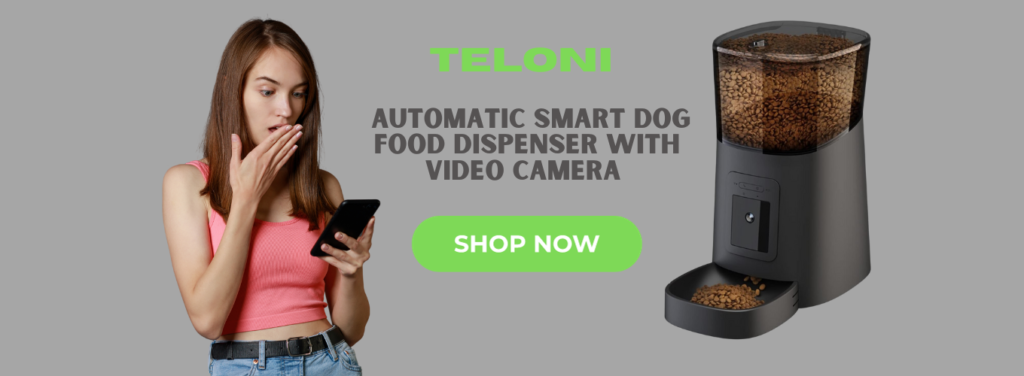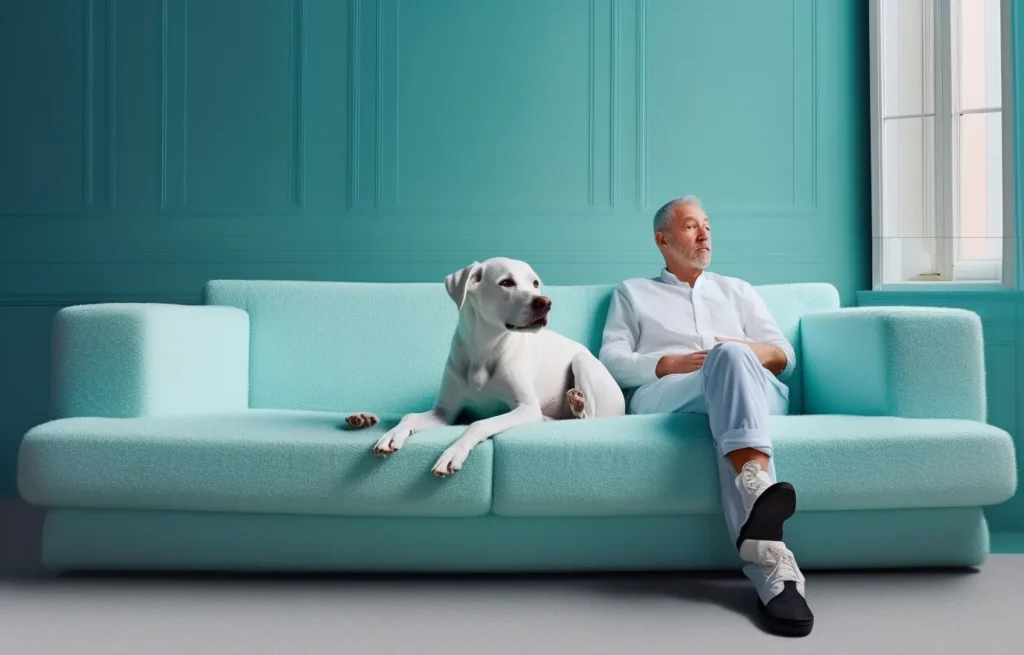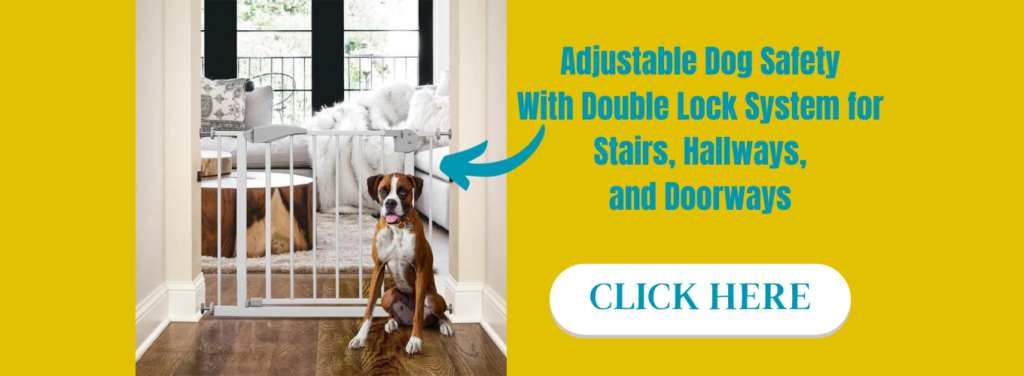
Separation Anxiety Solutions: Helping Your Dog Cope with Alone Time
Separation anxiety is a common issue that many dogs face when left alone. It can be distressing for both the dog and the owner. However, there are several solutions and strategies that can help your dog cope with being alone. By understanding the causes and signs of separation anxiety, creating a safe and comfortable environment, practicing gradual desensitization and counterconditioning, and seeking professional help and support when needed, you can help your dog overcome separation anxiety and have a more peaceful alone time.
Key Takeaways
- Separation anxiety is a common issue that many dogs face when left alone.
- Understanding the causes and signs of separation anxiety is crucial for addressing the problem.
- Creating a safe and comfortable environment can help alleviate separation anxiety.
- Gradual desensitization and counterconditioning techniques can be effective in reducing separation anxiety.
- Seeking professional help and support, such as consulting with a veterinarian or joining support groups, can provide additional guidance and resources.
Understanding Separation Anxiety in Dogs

What is Separation Anxiety?
Separation anxiety is a common behavioral problem in dogs that occurs when they become distressed or anxious when left alone. It can manifest in various ways, such as excessive barking, destructive behavior, or even self-harm. Dogs with separation anxiety often exhibit symptoms like restlessness, pacing, and excessive drooling. It’s important to address this issue early on to prevent it from worsening. Here is a table outlining the common signs of separation anxiety:
| Signs of Separation Anxiety |
|---|
| Excessive barking |
| Destructive behavior |
| Pacing and restlessness |
| Excessive drooling |
To help your dog cope with separation anxiety, it’s essential to establish a routine, provide mental stimulation, and create a cozy space for them. Gradual desensitization and counterconditioning techniques can also be effective in reducing anxiety. If the problem persists, it’s recommended to seek professional help from a veterinarian or animal behaviorist.
Causes of Separation Anxiety
Separation anxiety in dogs can be caused by a variety of factors, including lack of socialization and past traumatic experiences. Dogs that have not been properly socialized may feel anxious and fearful when left alone. Similarly, dogs that have experienced traumatic events, such as being abandoned or abused, may develop separation anxiety as a result. It is important to note that some dog breeds are more prone to separation anxiety than others. For example, breeds that are known for their loyalty and attachment to their owners, such as Labrador Retrievers and German Shepherds, may be more susceptible to developing separation anxiety. Providing a safe and comfortable environment and implementing positive reinforcement techniques can help alleviate separation anxiety in dogs.
Recognizing the Signs of Separation Anxiety
It is important to recognize the signs of separation anxiety in your dog, as early detection can lead to effective intervention. Some common signs include excessive barking or howling, destructive behavior, pacing or restlessness, excessive drooling, and house soiling. If you notice any of these behaviors when you are away from home, it may indicate that your dog is experiencing separation anxiety. Here are some signs to look out for:
| Signs of Separation Anxiety |
|---|
| Excessive barking or howling |
| Destructive behavior |
| Pacing or restlessness |
| Excessive drooling |
| House soiling |
If you observe these signs, it is important to consult with a veterinarian or animal behaviorist for further guidance and support.
Creating a Safe and Comfortable Environment

Establishing a Routine
Establishing a consistent daily routine is crucial for dogs with separation anxiety. Having a set schedule helps them feel more secure and reduces their anxiety. Make sure to include regular exercise and playtime in their routine to help them burn off excess energy. Additionally, interactive toys and puzzle feeders can provide mental stimulation and keep them occupied while you’re away. Remember, a structured routine can greatly benefit your dog’s overall well-being and help them cope with being alone.
Providing Enrichment and Mental Stimulation
In addition to establishing a routine and creating a cozy space for your dog, it is important to provide enrichment and mental stimulation to help alleviate separation anxiety. One way to do this is by offering interactive toys that dispense treats or puzzles that require problem-solving. These activities can keep your dog engaged and occupied while you are away. Additionally, consider incorporating scented toys or blankets that have your scent on them, as this can provide comfort and familiarity. Remember, mental stimulation is just as important as physical exercise for a dog’s well-being.
Creating a Cozy Space for Your Dog
After establishing a routine and providing enrichment and mental stimulation, it’s important to create a cozy space for your dog to feel safe and secure. This can be a designated area in your home where your dog can retreat to when they need some alone time or a place to relax. Soft bedding and comfortable blankets can be added to make the space even more inviting. Additionally, consider placing toys and chew treats in the area to keep your dog entertained. Remember, the goal is to create a space that your dog associates with positive experiences and relaxation.
Gradual Desensitization and Counterconditioning

Introduction to Alone Time
When introducing your dog to alone time, it’s important to start with short periods and gradually increase the duration. Allow your dog to become comfortable being alone by providing engaging toys and puzzles that can keep them mentally stimulated. Additionally, create a cozy space for your dog where they can feel safe and secure. This can be a crate, a designated area in the house, or a comfortable bed. Remember to reward your dog with treats and praise for calm behavior during alone time. By following these steps, you can help your dog develop positive associations with being alone and reduce their separation anxiety.
| Tips for Introducing Alone Time |
|---|
| Start with short periods and gradually increase duration |
| Provide engaging toys and puzzles |
| Create a cozy space for your dog |
| Reward calm behavior |
Remember, patience and consistency are key when helping your dog cope with alone time.
Slowly Increasing Alone Time
To help your dog gradually become more comfortable with being alone, it is important to start with short periods of alone time and gradually increase the duration. Begin by leaving your dog alone for just a few minutes and gradually work your way up to longer periods. During these alone times, make sure to provide enrichment activities such as puzzle toys or treat-dispensing toys to keep your dog occupied. Reward your dog with treats and praise when they handle being alone well. It is important to avoid rushing the process, as this can increase anxiety. Remember, every dog is different, so be patient and adjust the pace according to your dog’s needs.
| Tips for Slowly Increasing Alone Time |
|---|
| Start with short periods of alone time |
| Gradually increase the duration |
| Provide enrichment activities |
| Reward your dog with treats and praise |
| Avoid rushing the process |
| Be patient and adjust the pace according to your dog’s needs |
Positive Reinforcement and Rewards
In order to help your dog associate alone time with positive experiences, it is important to use positive reinforcement and rewards. When your dog exhibits calm and relaxed behavior during alone time, reward them with treats, praise, or playtime. This will help them understand that being alone can lead to enjoyable experiences. Additionally, you can create a reward system where your dog earns points or tokens for successful alone time sessions, which can be exchanged for special treats or privileges. Consistency is key when using positive reinforcement, as it reinforces the desired behavior and helps your dog feel more confident and secure.
Seeking Professional Help and Support

Consulting with a Veterinarian or Animal Behaviorist
When dealing with severe cases of separation anxiety in dogs, it is essential to consult with a veterinarian or animal behaviorist. These professionals have the expertise to assess your dog’s condition and provide appropriate guidance and treatment options. They can help determine if medication is necessary and recommend behavioral modification techniques. Additionally, they can offer support and resources to assist you in managing your dog’s separation anxiety. Remember, seeking professional help is a crucial step in ensuring your dog’s well-being and helping them overcome their anxiety.
Here are some key considerations when consulting with a veterinarian or animal behaviorist:
- Discussing your dog’s history and symptoms to provide a comprehensive understanding of the situation.
- Exploring medication options for severe cases, which may help alleviate anxiety and aid in behavior modification.
- Developing a personalized treatment plan that includes gradual desensitization and counterconditioning techniques.
Seeking professional help is a proactive approach to addressing separation anxiety in dogs. With the guidance and support of a veterinarian or animal behaviorist, you can create a tailored plan to help your dog cope with alone time.
Medication Options for Severe Cases
In some severe cases of separation anxiety, medication may be necessary to help your dog cope. Anti-anxiety medications such as fluoxetine or clomipramine can be prescribed by a veterinarian to help reduce your dog’s anxiety levels. These medications work by altering the chemicals in the brain that are responsible for anxiety. It is important to consult with a veterinarian or animal behaviorist before starting any medication for your dog. Medication should always be used in conjunction with behavioral training and environmental changes to address separation anxiety effectively.
Here is a table summarizing some common medication options for severe cases:
| Medication | Dosage | Side Effects |
|---|---|---|
| Fluoxetine | 1mg/kg | Drowsiness, decreased appetite |
| Clomipramine | 0.5-2mg/kg | Dry mouth, constipation |
If you are considering medication for your dog, it is crucial to work closely with a professional to determine the right dosage and monitor any potential side effects. Remember, medication is not a standalone solution, but it can be a helpful tool in managing severe separation anxiety.
Note: Medication should only be used under the guidance of a veterinarian or animal behaviorist.
Joining Support Groups and Online Communities
In addition to seeking professional help, joining support groups and online communities can be a valuable resource for dog owners dealing with separation anxiety. These groups provide a platform for sharing experiences, tips, and advice with others who are going through similar challenges. It can be comforting to connect with people who understand the struggles and can offer support and encouragement. Online communities also offer the opportunity to learn about new techniques and strategies for helping your dog cope with alone time. Remember, you are not alone in this journey, and there are people out there who can provide guidance and understanding.
Frequently Asked Questions

How do I know if my dog has separation anxiety?
Some signs of separation anxiety in dogs include excessive barking or howling, destructive behavior, urinating or defecating indoors, pacing, and attempts to escape.
Can separation anxiety in dogs be cured?
While separation anxiety in dogs can be managed and improved, it may not be completely cured. With proper training, behavior modification, and support, most dogs with separation anxiety can learn to cope better with alone time.
What can I do to help my dog with separation anxiety?
There are several steps you can take to help your dog with separation anxiety, including establishing a routine, providing mental stimulation, creating a safe space, and gradually desensitizing them to being alone.
Should I punish my dog for separation anxiety?
No, punishing your dog for separation anxiety will not help and may worsen the condition. It is important to approach separation anxiety with patience, understanding, and positive reinforcement.
Can medication help with separation anxiety in dogs?
In severe cases, medication prescribed by a veterinarian may be used as part of the treatment plan for separation anxiety in dogs. Medication should always be used in conjunction with behavior modification techniques.
Are there any natural remedies for separation anxiety in dogs?
Some natural remedies that may help with separation anxiety in dogs include lavender essential oil, calming supplements, and pheromone diffusers. However, it is important to consult with a veterinarian before using any natural remedies.

